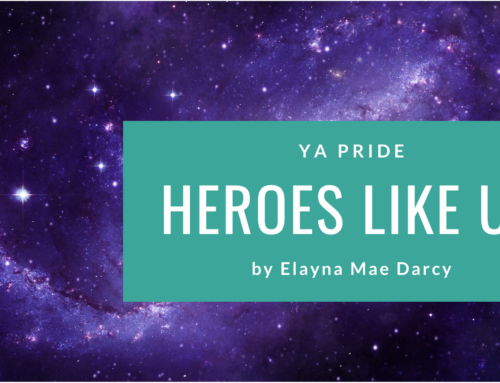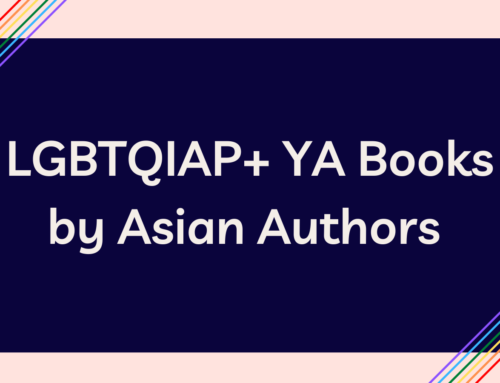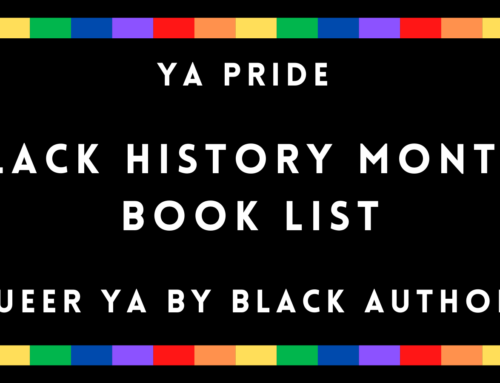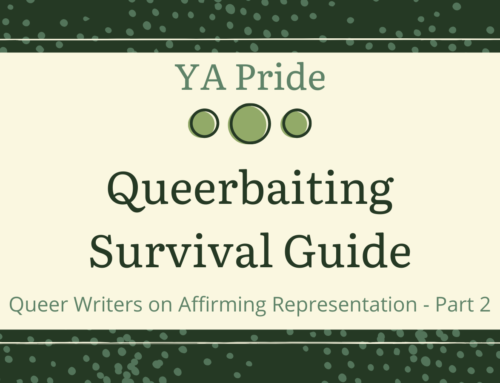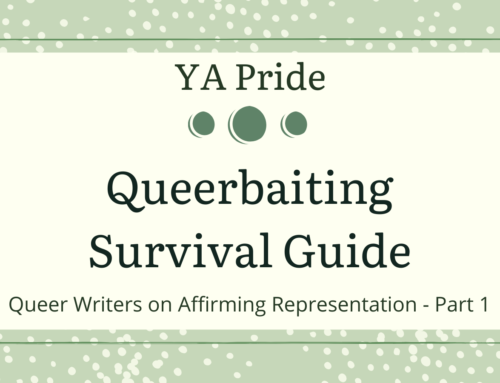Bisexual Awareness Week Series: Day 1 – Previous Posts: Introduction to Bisexual Awareness Week Series – Bisexuality in YA
by Claire Spaulding
When I first started brainstorming for this post, I came up with a list of what I want to see in bisexual YA: more badass bisexual ladies going on adventures! Swoon-worthy romance with happy endings! Bisexual pirates! Seriously, guys, where are my bisexual YA pirate novels?!
But then I moved beyond what I want in bisexual YA right now, and I started thinking about what I wanted in bisexual YA back when I really, deeply needed good bisexual YA. Which was when I was questioning.
And I realized that, at the bottom of a long wish list that includes pirates and adventures and happily-ever-afters, I’m actually still searching for what I needed back then: more nuance and diversity in the way that bisexual stories get told. Books that explore an array of complicated, subtle experiences of bisexuality that don’t fit into the conventional bisexual narrative. Bisexual books that welcome, include, and validate.
Diverse representation in literature provides mirrors for people who don’t see themselves reflected in mainstream culture, but when we look into those mirrors, we can’t always recognize ourselves. Sometimes, we don’t want to recognize ourselves. Sometimes, we’ve just been taught to look away. Don’t make eye contact. Pretend we never looked in the first place.
For the questioning teen, especially the questioning teen who might end up identifying as bi or pan or polysexual, the overrepresentation of clearly-defined gay and lesbian characters in queer YA literature can provide plenty of excuses to look away. “Oh, that character isn’t attracted to people of a different gender–I’m not like them.” “Oh, that character has always known that they’re gay–I’m definitely not like them.”
Queer YA tends to validate gay and lesbian identities with a force and clarity it doesn’t grant to bisexuality. And when queer YA does validate bisexuality, it only tends to do so in two very specific and limiting ways: either the bisexual character has had relationships with at least one boy and one girl in the past, or the bisexual character is currently in a love triangle with exactly one boy and one girl (I say boy and girl because queer YA suffers from a truly appalling dearth of nonbinary characters).
Made out with a girl? Check. Made out with a boy? Check. Congrats, you’re a genuine bisexual! Please proceed to the Bisexual Registration Office to submit your paperwork and confirm your status. No, you haven’t checked those boxes? Sorry, but why exactly do you think you belong here?
This trope spreads the insidious idea that, while straight kids and gay kids can know their identity instinctively, bisexual kids “can’t know for sure until it happens,” i.e. until they’ve had positive sexual or romantic experiences with people of multiple genders. While gay and lesbian kids also hear that message from the straight world, I think it’s something bisexual kids are more likely to internalize. After all, most of us are attracted to people of the “opposite” gender. So when we start to explore queer spaces, we get imposter syndrome. That nagging feeling that we need to do more to prove to others, and ourselves, that we belong. I’ve experienced that, and I’ve heard it from nearly all of my questioning friends at one point or another.
And that’s so harmful. It’s not as though we’re all asleep in a glass coffin of heteronormativity and being kissed by someone of the same gender is the only way to wake up. There are tons of valid ways to figure out one’s identity, and sexual experimentation is only one of them.
Which is another reason why the checklist approach to bisexual representation is harmful: the trope reinforces the stereotype that bisexual people are inherently more promiscuous than people of other orientations, which spreads a negative image of bisexuality and alienates the many bisexual teens who aren’t sexually active and don’t necessarily want to be.
Robyn Ochs’ inclusive definition of bisexuality reads as follows: “The potential to be attracted—romantically and/or sexually—to people of more than one sex and/or gender, not necessarily at the same time, not necessarily in the same way, and not necessarily to the same degree.”
Where is the space in bisexual YA for questioning teens? For teens with no sexual or romantic experience? For teens who experience attraction in complicated and messy ways, teens who haven’t always known, teens who have only ever been in serious relationships with people of one gender?
Where, in other words, is the space in queer YA for bisexual teens whose identities can’t be summed up in a series of checkboxes?
We need to use bisexual YA to welcome teens who find it difficult to access the majority of queer YA. We need complexity, nuance, inclusivity and positivity.
We need to create gentler mirrors. Mirrors that don’t make it so easy for questioning teens to look away.
At the end of the day, here’s the core of my wishlist for bisexual YA:
- Characters who self-identify as bisexual, pansexual, and polysexual. For contemporary fiction, at least one of those specific words needs to be used. In other genres, characters must still define their own identities clearly in contextually appropriate language.
- Books with multiple bisexual characters who experience bisexuality differently.
- Characters who start off questioning, end up questioning, and reject other characters’ attempts to label them as gay or straight along the way.
- Bisexual characters who have not been in relationships with people of multiple genders.
- Bisexual characters who do not end up having relationships or sexual experiences with people of multiple genders.
- Aro/ace-spectrum bisexual/biromantic characters.
- Bisexual and questioning characters with friends, both queer and straight, who affirm their identities and accept them as valid members of the queer community.
- Bisexual characters supporting other bisexual characters.
And, of course, pirates.
—
Claire Spaulding is a writer and college student. While she procrastinates on her latest novel, she can usually be found playing piano, drinking tea, crying over musical theatre, and reading as much diverse fantasy and science fiction as she can find. Her short story “Chocolate Chip Cookies for the Apocalypse” was published in Daily Science Fiction in February 2015.
